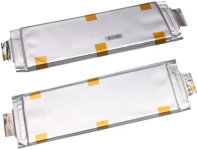TheoneKnocker
1 W
I was wondering since pouch cells last longer and are safer i was going to build a battery using them, problem is that the capacity isnt that big, I was planning on ordering 60 cells, 30 for a series battery pack and another 30 for pure parallel. Would i in theory be able to connect the battery packs together to create a monster battery back of 126v and 1890Ah? Or would i end up just burning everything to the ground or this plan not work at all. Yes both battery pack would have their seperate bms and I would have to figure out a way to connect them both but i think this plan is either really stupid and dangerous or smart, i want your opinion on this guys and thank you very much.


